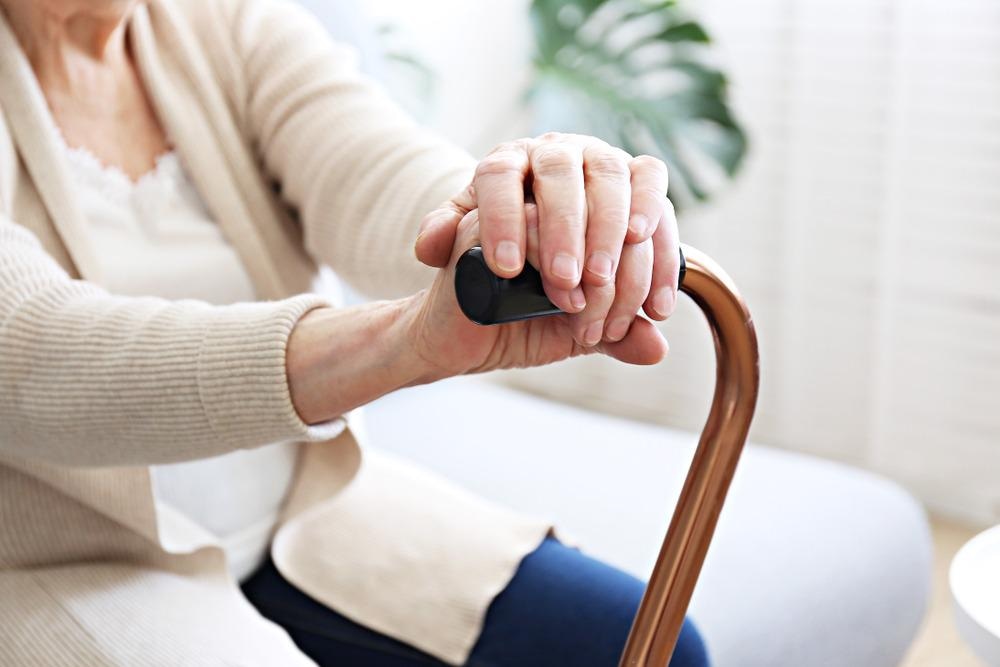A research project co-funded by the National Institutes of Health’s National Eye Institute (NEI) and the National Institute of Biomedical Imaging and Bioengineering (NIBIB) has resulted in the development of a new robotic cane with the potential to help navigate people with visual impairments around indoor environments. The new technology incorporates inertial sensors and optical sensors in a cane that acts as an electronic navigation aid.

Image Credit: evrymmnt/Shutterstock.com
What are Inertial Sensors?
Inertial sensors measure a moving object's acceleration and angular velocity along three perpendicular axes (three-dimensional [3D] space). Types of inertial sensors include gyroscopes, accelerometers, and magnetometers. Data from all three sources can be combined to define complex motions and is vitally important for several applications in various fields of science and medicine.
The first inertial sensors emerged at the beginning of the 19th century, but it was not until the 1940s that specialized inertial guidance systems appeared. Two decades later, in the 1960s, this technology became commonplace.
The delay was due to the challenging requirements for constructing accelerometers and gyroscopes that could function with high levels of accuracy. Over the past 50 years, significant technological advances have helped further the evolution of inertial sensors and systems. Now, inertial sensors are being leveraged by the medical and healthcare sectors in a rapidly growing number of applications.
The Use of Inertial Sensors
Over recent years, wearable inertial sensors have been developed for a wide range of clinical applications. Inertial navigation systems are essential for calculating patients' velocity, position, attitude, and medical equipment. For example, inertial sensor systems have been integrated into various medical equipment including, magnetic resonance imaging (MRI) machines, intelligent patient beds, angiography equipment, and surgical robots.
Additionally, inertial sensors are an integral part of wearable smart device technology. This is currently being used as a cost-effective and straightforward way to collect data from a range of patient groups for the purpose of disease prevention, monitoring, and evaluating the efficacy of treatment plans for a number of illnesses such as neurologic diseases, including PD, Alzheimer's disease, epilepsy, and stroke.
Mostly, wearable smart devices are being used to monitor the health of the elderly, as well as to facilitate medication adherence monitoring in chronically ill patients.
While inertial sensors have already gained much success in the healthcare sector, their application still faces some challenges. For example, a variety of factors influence the potential performance of inertial sensors in healthcare applications.
Research shows that using a combination of inertial sensors can increase the accuracy of motion detection. However, there is currently not enough research to determine optimal combinations. More rigorous study designs need to be implemented to test the performance of inertial sensor platforms to enable them to reach their full potential in the healthcare setting.
Smart Cane Gives the Blind Freedom to Explore
Video Credit: Freethink/YouTube.com
Integrating Inertial Sensors into Visually Assistive Technologies
In September, a new study published in the journal IEEE/CAA Journal of Automatica Sinica demonstrates how inertial sensors have been successfully integrated into a new robotic cane that can help people with visual impairments navigate indoor environments. The system is paired with the building's architectural drawing to safely guide the user to their intended location with the use of sensory and auditory cues.
The new technology addresses the issue that while the white cane is considered by most people in the visually impaired community to be their more effective navigational tool, the technology hasn't been updated for over a century. On the other hand, navigational systems for those without visual impairments have advanced significantly, considering the GPS-based applications we now have to replace the use of maps.
While there have been advancements in cellphone-based navigation applications designed to assist those with visual impairments, these applications have generally been limited to outside use to help people with tasks such as crossing the road. Inside spaces, however, have been largely neglected.
The cane uses a combination of knowledge of the building's floor plans, alongside information collected from optical sensors (infrared) to calculate the distance between the cane and physical objects. Inertial sensors are utilized to compute the cane's movement in relation to the building's layout; the new cane technology can safely guide a person through an indoor environment, even helping them to tackle obstacles such as unexpected objects that disrupt the route, doorways, or steps.
Before this new electronic navigation aid can become commercially available, scientists must continue working on developing it so that it is suitable for its purpose. For example, the cane is currently too heavy for daily use, so now, researchers are focused on reducing the weight of the device.
The technology marks a huge step forward in the field of visually assertive devices. Hopefully, once widely available, the technology will have the impact of giving more independence to those with visual impairments and may inspire more developments in this field.
Continue reading: Wireless 3D Printed Wearable Sensor to Track Health and Body Function.
References and Further Reading
Reyes Leiva, K., Jaén-Vargas, M., Codina, B. and Serrano Olmedo, J., (2021) Inertial Measurement Unit Sensors in Assistive Technologies for Visually Impaired People, a Review. Sensors, 21(14), p.4767. Available at: https://doi.org/10.3390/s21144767
Cozzens, T. (2021) Robotic 'white cane' helps visually impaired navigate indoors. [Online]. GPS World. Available at: https://www.gpsworld.com/robotic-white-cane-helps-visually-impaired-navigate-indoors/
Zhang, H., Jin, L. and Ye, C., (2021) An RGB-D Camera Based Visual Positioning System for Assistive Navigation by a Robotic Navigation Aid. IEEE/CAA Journal of Automatica Sinica, 8(8), pp.1389-1400. Available at: https://doi.org/10.1109/JAS.2021.1004084
Lu, T. C., Fu, C. M., Ma, M. H., Fang, C. C., and Turner, A. M. (2016) Healthcare Applications of Smart Watches. A Systematic Review. Applied clinical informatics, 7(3), 850–869.
Disclaimer: The views expressed here are those of the author expressed in their private capacity and do not necessarily represent the views of AZoM.com Limited T/A AZoNetwork the owner and operator of this website. This disclaimer forms part of the Terms and conditions of use of this website.